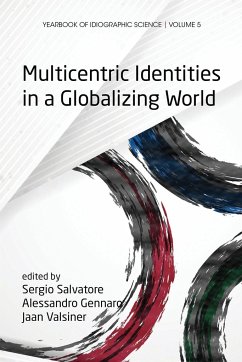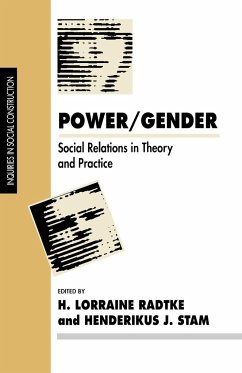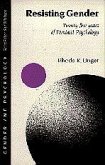Gender identities are best understood as existing on spectra. One's gender identity or identities, more than one's biological sex or sexual orientation(s), influences the quality of binary as well as eclectic (non-binary) gender identity projections in the affective, behavioral and cognitive conversational and interactional patterns found in all dyadic relationships, from those first emerging during childhood to those expressed in intimate partnerships in adulthood. Projection, an unconscious interactional defense mechanism, is employed by all individuals, especially at times of stress. Projection reaches its culmination in couple relationships when either binarily-oriented "gender-conforming" or eclectically-oriented "gender non-conforming" conversational exchanges between partners become dominant, even entrenched. This phenomenon is examined "up close" in the charged and often over-rehearsed exchange formats of couples in general and then, more specifically, in three couples from the author's couple-oriented clinical psychotherapy practice. These clients' efforts to move away from debilitating binary-genderist identity projections are explored in depth. Images, graphs, and conversational examples portray the complexities of gender identity projections. Color-specific images are offered to depict the binary and eclectic spectra as well as to portray the gender identity projections that occur in all intimate relationships. A Gender Identities/Gender Identity Projections Wheel (related concentric rings that spin independently) is presented to visually portray the relationship between gender identity(ies) and gender identity projections while highlighting the importance of sex (gender) and sexual orientation as related factors in the establishment of a consolidated sense of self. Table are presented to further highlight the intricacies of identity and projection. Finally, case examples from the author's clinical psychotherapy practice demonstrate the reclamation process and the building of greater and more integrated self-awareness between mixed gender identity couple members. Cultivating an appreciation for the disabling, often paralyzing power of rigidly repeated binary or eclectic gender identity projections while moving consciously toward more flexible and tentatively-held gender identity projections in intimate couple relationships is best accomplished through effective dependency, empathic attunement, and intentional conversations dedicated to gender transparency and growth between couple members. Such communication resolve creates greater couple health and partnership satisfaction. Central to this endeavor is the couple therapist's own gender identity(ies) understanding and integration.








